SHIVALIK CLASS FRIGATES: THE WORKHORSES OF THE SUNRISE FLEET
BLOGS
Akash
5/6/20235 min read
The Shivalik class multirole stealth frigates were the first class of warships designed and made in India having advanced radar-cross section reduction or ‘stealth’ inculcated in their design.
3 ships of the class-INS Shivalik(F47), INS Satpura(F48),INS Sahyadri(F49) which were commissioned between 2010 and 2012 are based at Visakhapatnam and serve under the Eastern Naval Command of the INDIAN NAVY.
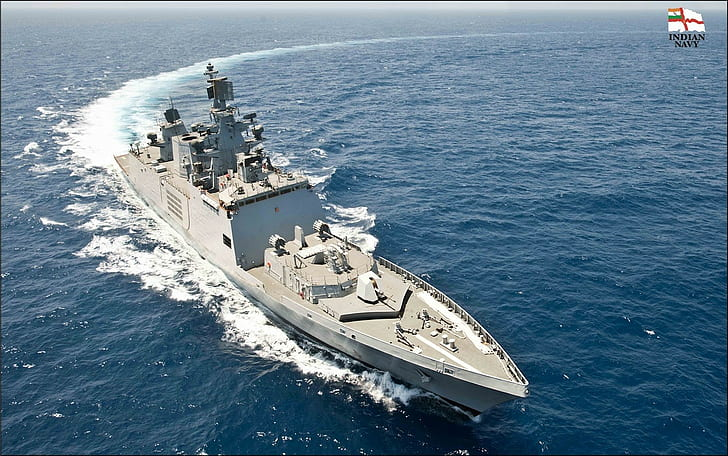

THE PRECEDENT
The experience and knowledge gained by the country’s ship building ecosystem during the development of Brahmaputra class frigates was unmatched. Many in house technologies were developed and featured for the first time on them.
The class saw the integration of the first indigenous combat data systems and Barak SAMs. Also, the class saw the integration of armaments and sensors from both the RUSSIA and the WEST as well as INDIA. Designed by the Navy's Directorate of Naval Design(now, Warship Design Bureau), they were constructed by GRSE.


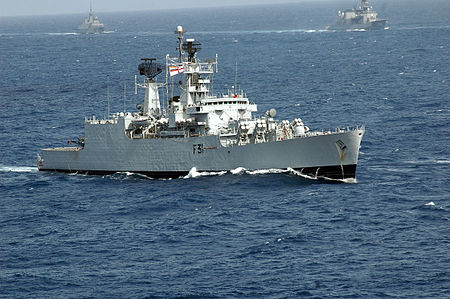

The class was powered by 2xBHEL steam turbines and had a range of 4500 nautical miles.
The BEL RAWS-3 is the primary radar used for air and surface tracking. The BEL Aparna Fire Control radar functions as the fire control radar for the Kh-35 SSMs. The Israeli origin Elta EL/M- 2221 search and track radar is used as the fire control radar for the Barak SAMs. The ships also featured many indigenous radars such as BEL/Signal RAWL-02 (PLN 517) air search radar and the BEL Ajanta Mk.2C Electronic Warfare system are provided for EWS.
The class features 4 × quadruple KT-184 launchers for 16 Kh-35 anti-ship missiles and Barak SAMs in 3x8 VLS cells and 4 × AK-630 6-barreled 30 mm Gatling gun for self defence. 2 × triple ILAS 3x324 mm torpedo tubes are also given. They also have the Oto Melara 76 mm gun as the main gun. The ship has twin hangers that can accommodate two Sea King MK-42 sized anti-submarine warfare helicopters.
THE NEW LEVEL
With the design and development of Brahmaputra class and Delhi class, the indigenous naval eco system had enough experience to build a new combatant that could take the Indian ship building industries to a new level.
Now the mammoth task to build the ships was finalized after the directorate of naval design finished designing the ships on paper. Mazagon Dock Shipbuilders or MDL was given the job to construct three ships of P-17 class after the approval from the cabinet in 1997. Although the navy formally ordered the ships in early 1999, the construction could start only after two years due to delay in delivery of D40s steel from Russia and changes in hull design.
The plate cutting ceremony took place on 18 December 2000, marking the commencement of construction as Yard 12617. The keel was laid on 11 July 2001 and the first vessel was launched on 18 April 2003.


After 7 years and 11 days and ₹2,800 crore(US$650 million each ship), the first ship, INS Shivalik was commissioned into the Indian Navy.
Displacing 6200 tonnes, they are a shining example of the sheer amount of capability present in the domestic shipbuilding industry.
3 ships-INS Shivalik(F47), INS Satpura(F48),INS Sahyadri(F49)were commissioned between 2010 and 2012 and are homeported at Visakhapatnam and come under the Eastern naval command.
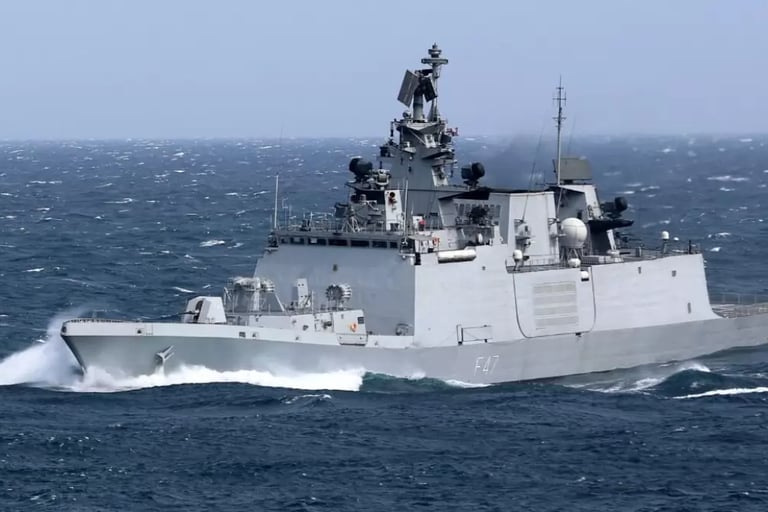

THE NEW CAPABILITIES
The Shivalik class are the first class of ships in the Indian navy to be powered by twin diesel engines and twin gas turbines in a combined diesel or gas propulsions system.
The twin GE LM2500 Gas turbines and twin Pielstick 16 PAC STC diesel engines total for a combined power of 48800 kW driving two variable pitch propellers, giving the ships a top speed of 30+knots and a range of 9000 km.
The ELTA EL/M- 2238 STAR of Israeli origin is the main radar of the Shivalik class and has a maximum range of 350 km in contrast to BEL RAWS used in her predecessor. She also incorporates various indigenous sensors such as BEL APARNA used as a fire control radar for the 76mm Oto Melara Super Rapid Gun Mount and the new BEL HUMSA-NG hull mounted sonar as opposed to the original HUMSA in Brahmaputra class. She has BEL Ellora EWS for electronic warfare instead of BEL Ajanta Mk.2C Electronic Warfare system used in previous ships.
The weapon package of the P-17 class was quite a bit different from that of its predecessor. The Shivalik’s main weapon is Russian Klub anti-ship missiles which are fired from 8 of its VLS cells whereas the P-16A had Kh-35. For air defence, the P-17 has 32 VLS cells for Barak 1 missiles which have a range of 0.5-12 km along with the AK-630 CIWS and 24 Shtil-1 anti air missiles. For anti-submarine warfare, they have twin RBU-6000 rocket launchers in addition to triple torpedo launchers. The Brahmaputra class didn't feature rocket launchers. The P-17 frigates has the 76 mm super rapid gun mount in a stealth cupola. She can carry two helicopters in her twin hangars.
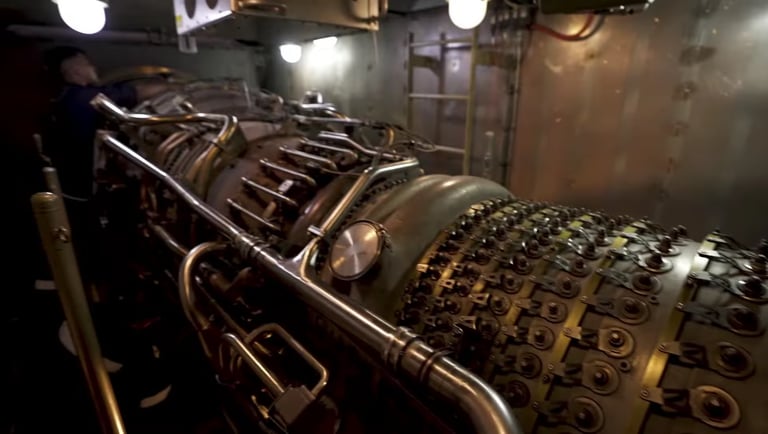

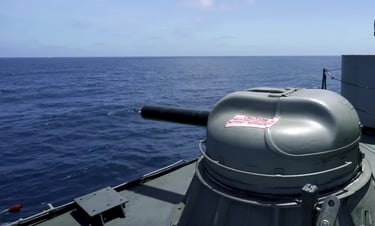

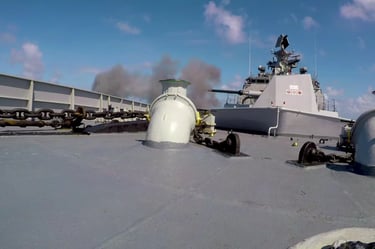


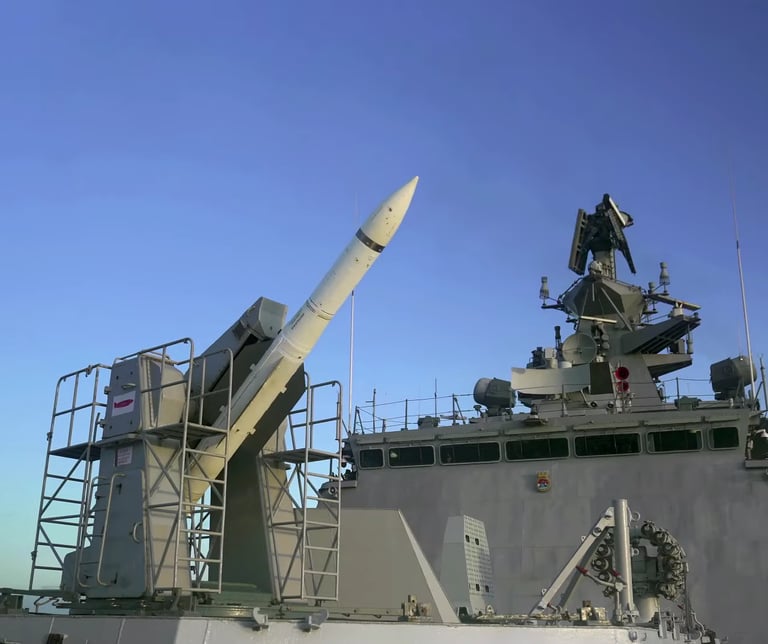
A POTENT CHALLENGE
For contrast, the PLAN’s type 054a class frigates displace only half of the Shivalik class.
The main radar of type 054a features Type 360 radar which has a max detection range of 250 km compared to 350 km of the Shivalik class. But at present, the Chinese have an edge in air defence as the type 054a is equipped with HQ-16 SAMs in 32 VLS cells whereas the Shivalik class has older Shtil arm SAM systems which are less efficient than VLS launched missiles. But, this too will be eliminated once the VL-SRSAM is installed during their mid-life refit.
On 1 June 2018, Pakistan Navy ordered four Type 054As as Tughril class. 2 ships of the class have already been commissioned while the remaining two have been commissioned May, 2023.
Clearly, the Shivalik class frigates are a true challenge for any navy in the world. What really sucks is quantity. They were built only in the number 3. That is 10 times less than the current no. of active type 054a frigates.
THE FUTURE...
With the approval of Brahmos fire control system for Shivalik class, we’ll soon see the addition of Brahmos which will be replacing the Klubs. The older Barak-1 will be replaced by the indigenous VL-SRSAM too which will make her more deadly and be better protected against aerial threats. Although the fate of Shtil1 arm launcher on the P-17s remains uncertain.
For the future, the Nilgiri class frigates are being built that can be truly termed as a successor to the Shivalik class.
For now, INS Shivalik and her sisters will proudly carry the Indian naval ensign on their mast for decades to come.
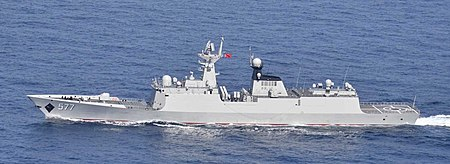

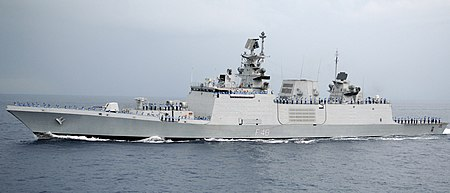

PLAN’s types 054a frigate Huanggang
INS Satpura(F48)
THE RESULT
